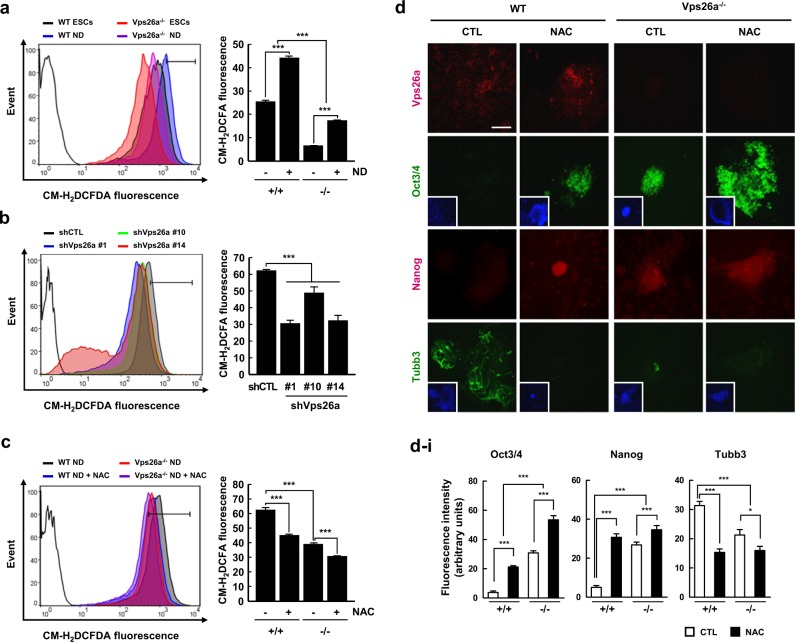Fig. 4.
Vps26a is required for increased ROS leading to ESC-mediated neurogenesis. a, b The effect of Vps26a deficiency (a) or knockdown (b) on ROS generation was determined by flow cytometry using WT and Vps26a-/- ESCs (a) and shCTL- and shVps26a-ECCs (#1, #10, and #14) (b) differentiated for 6 days and 48 h, respectively. Unstained cells (black lines) were used as a negative control. The data are representative of at least three independent experiments and presented as means ± SD (n = 3). ***P < 0.001. c WT and Vps26a-/- ESCs were differentiated in the presence or absence of 2.5 mM NAC for 6 days, and ROS levels were measured by flow cytometry. The data are representative of at least three independent experiments and presented as means ± SD (n = 3). ***P < 0.001. d Double-label immunocytochemical analysis of Vps26a (red), Oct3/4 (green), Nanog (red), and Tubb3 (green) using WT and Vps26a-/- ESCs differentiated in the presence or absence of 2.5 mM NAC for 3 days. DAPI staining data are shown as insets to the Oct3/4 and Tubb3 images. Scale bar, 50 μm. d–i immunofluorescence quantification of (d). Quantitative analysis of the fluorescence intensity performed using ImageJ software (n = 3). Error bars are ± SD. *P < 0.05; ***P < 0.001 vs. WT ND 6 CTL

